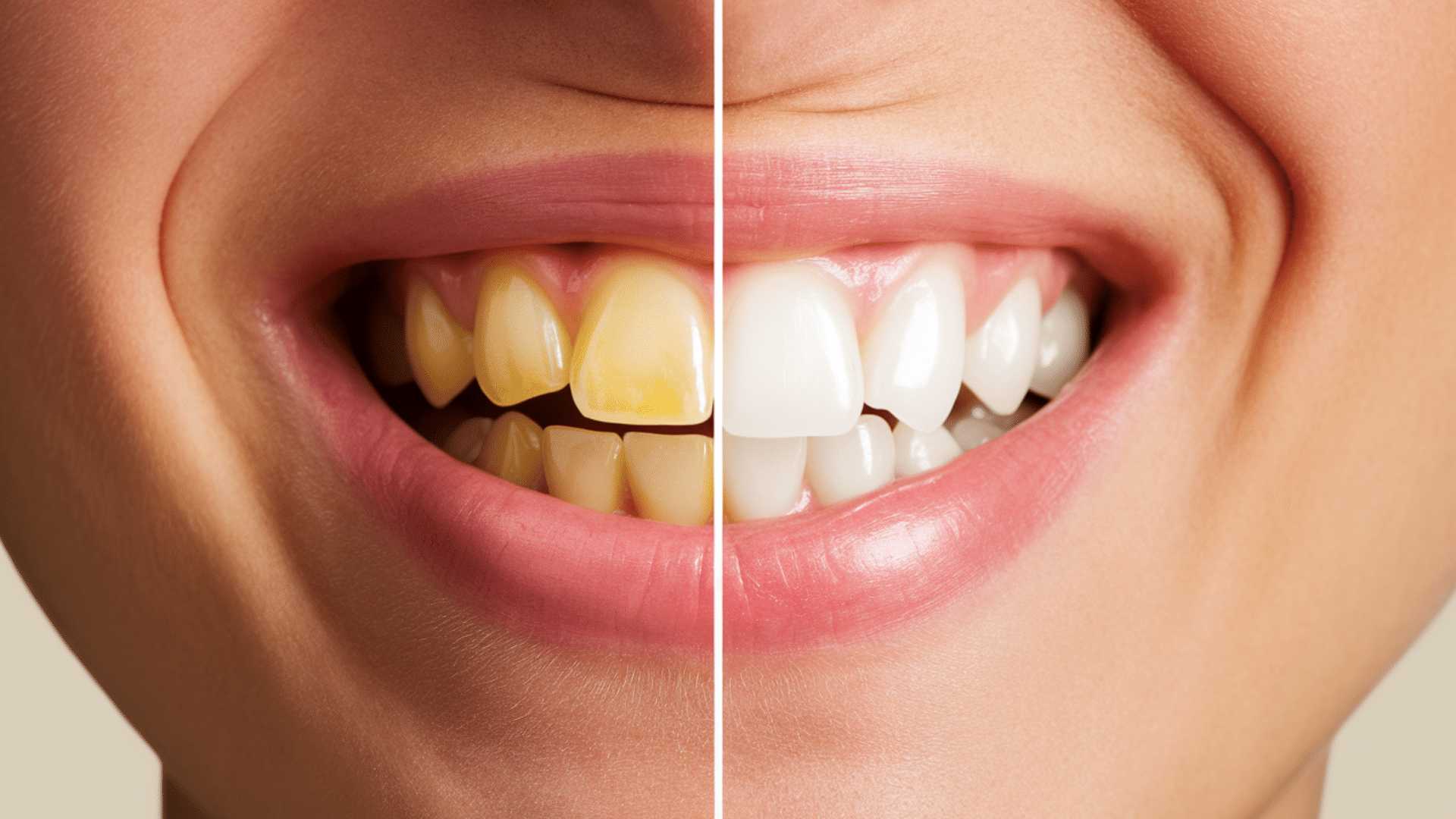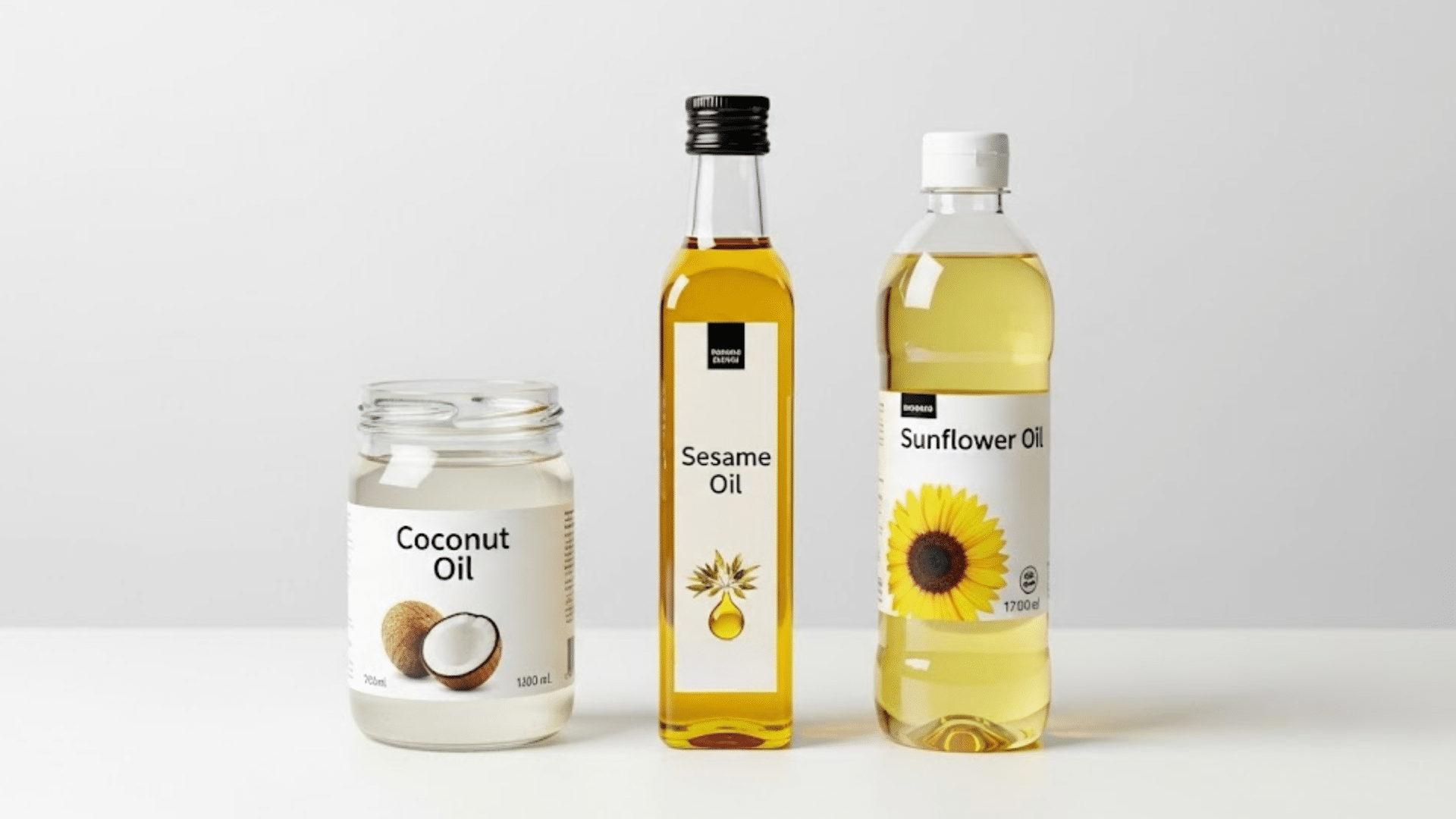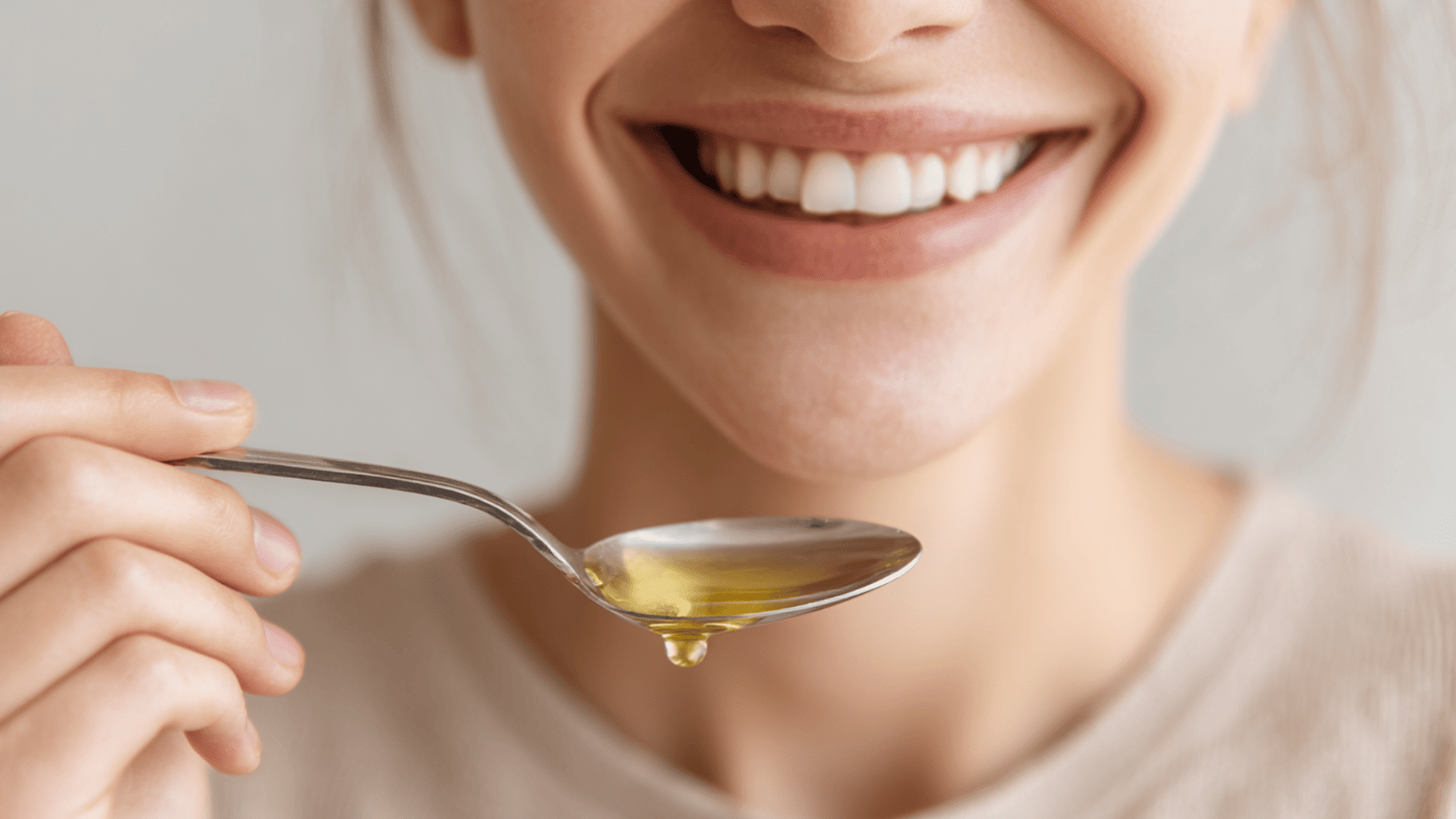Oil pulling is gaining popularity as a natural and straightforward way to improve oral hygiene.
This practice, rooted in ancient Ayurvedic medicine, has been adopted by people worldwide to enhance dental health and naturally freshen their breath.
In the blog, I’ll break down the health benefits of oil pulling, focusing on its positive effects on oral hygiene.
From fighting plaque and preventing cavities to enhancing your overall oral health, you should learn about oil pulling and how it can help you maintain a brighter smile and fresher breath.
What is Oil Pulling?
Oil pulling is a practice that involves swishing oil in the mouth to improve oral health. Traditionally, oils such as coconut oil, sesame oil, and sunflower oil are used.
The process is simple: you place a tablespoon of oil in your mouth and swish it around for 5-20 minutes, allowing it to mix with saliva to remove harmful bacteria and plaque.
This practice dates back over 3,000 years in India, long before the invention of modern toothbrushes and toothpaste.
While it was initially used for general health and wellness, oil pulling is now primarily recognized for its dental benefits, particularly in combating bad breath, plaque, and gum disease.
How Often Should You Oil Pull?
The frequency of oil pulling depends on your goals:
- For general oral health, using oil pulling as a preventive measure to support gum health and maintain fresh breath is usually sufficient if done once or twice a week.
- For Gingivitis or more serious oral health issues, oil pulling once a day can help reduce plaque buildup and soothe inflamed gums.
- For other oral concerns, individuals seeking to reduce bad breath or combat plaque buildup can oil pull up to three to four times a week to maintain optimal oral hygiene.
Key Benefits of Oil Pulling for Oral Health


Oil pulling offers a natural and effective way to enhance your oral health. It provides numerous benefits for maintaining a clean and healthy mouth.
1. Fighting Harmful Bacteria
One of the main reasons people turn to oil pulling is its ability to fight harmful bacteria in the mouth. The oil helps reduce bacteria, such as Streptococcus mutans, a major contributor to cavities and gum disease.
By regularly practicing oil pulling, you can enhance the oral microbiome, which supports oral health and helps prevent common dental issues such as cavities and bad breath.
Studies suggest that oil pulling can reduce bacteria and inflammation in the gums, leading to better oral hygiene.
2. Preventing Plaque and Gingivitis
Oil pulling can also help reduce plaque buildup on the teeth, which is a common cause of gingivitis (gum inflammation). Plaque is a sticky film of bacteria that can harden into tartar, leading to gum disease and tooth decay, also known as cavities.
The anti-inflammatory properties of oils like coconut oil and sesame oil help soothe the gums, making them healthier over time. It’s essential to note that while oil pulling is effective, it should be used in conjunction with regular brushing and flossing.
3. Whitening Teeth
While oil pulling is not a substitute for teeth whitening treatments, some people claim that it helps to whiten teeth over time. The effects are subtle and primarily come from the ability to remove bacteria and stains from the surface of your teeth.
However, there is limited scientific evidence to confirm significant whitening results. Research has shown that oil pulling can make teeth appear cleaner and brighter by removing surface stains caused by bacteria, but it should not be relied upon as the primary method for whitening teeth.
4. Cavity Prevention
Oil pulling may also play a role in preventing cavities. By balancing the bacteria in the mouth, oil pulling helps prevent the overgrowth of harmful bacteria, such as Streptococcus mutans, that can lead to tooth decay.
While oil pulling can be an excellent preventive measure, it’s not a substitute for regular dental care. Brushing with fluoride toothpaste and visiting your dentist regularly remain key to maintaining optimal dental health.
5. Fresh Breath
Bad breath, also known as halitosis, is often caused by the accumulation of bacteria in the mouth. Oil pulling helps reduce these bacteria, leading to fresher breath.
Unlike mouthwashes that can dry out the mouth, oil pulling supports a healthy balance of bacteria, which is essential for keeping your mouth clean and fresh.
Choosing the Right Oil for Oil Pulling
Not all oils are created equal when it comes to oil pulling. Some oils are better for oral health than others. Here’s a brief overview of the most popular oils used:
- Coconut Oil: Known for its antimicrobial properties, coconut oil is the most commonly recommended oil for oil pulling. It helps reduce plaque, fight bacteria, and promote gum health. It also contains lauric acid, which is known for its ability to kill harmful bacteria in the mouth.
- Sesame Oil: Another great option, sesame oil has been shown to reduce plaque and improve gum health. It’s also rich in antioxidants and has anti-inflammatory properties that help soothe irritated gums.
- Olive Oil & Sunflower Oil: These oils can also be used for oil pulling; however, they are not as effective as coconut oil in terms of antibacterial action.
Always opt for organic, cold-pressed oils, as they preserve the nutrients better than refined oils.
How to Do Oil Pulling: A Simple Step-by-Step Guide
Step 1. Choose Your Oil


Select an oil such as coconut oil, sesame oil, or sunflower oil. Coconut oil is the most popular due to its antimicrobial and anti-inflammatory properties.
Step 2. Start Swishing


Place about 1 tablespoon of oil in your mouth. Swish the oil around your mouth and through your teeth for 5-20 minutes.
Begin with 5 minutes if you’re new to your practice, and gradually increase the duration as you become accustomed to it.
Step 3. Spit the Oil


After swishing, spit the oil into the trash (not the sink, as it can clog pipes). The oil will turn white and frothy over time, indicating that it’s doing its job.
Step 4. Rinse and Brush


Rinse your mouth with warm water to remove any remaining oil, and then brush your teeth as you usually would.
Brushing after oil pulling helps clear out any bacteria that may have been loosened from your teeth.
Should You Oil Pull Before or After Brushing Teeth?
It’s generally recommended to oil pull before brushing your teeth. Here’s how and here’s why:
- Oiling First: Swishing the oil around first helps remove bacteria and plaque before brushing, which means that when you brush afterward, you’re removing residual oil and bacteria.
- Brushing After Oil Pulling: If you brush your teeth before oil pulling, you may disrupt the biofilm of healthy bacteria that oil pulling helps maintain, so that you won’t reap the benefits from the oils’ natural properties. Additionally, brushing after helps remove the remaining oil and bacteria from your mouth.
Misconceptions About Oil Pulling
While oil pulling offers several oral health benefits, it’s essential to address some common misconceptions:
- Oil Pulling is Not a Substitute for Brushing: Oil pulling is an excellent supplement to brushing and flossing, but it cannot replace these essential dental hygiene practices. Continue brushing your teeth at least twice a day with fluoride toothpaste.
- It Does Not Cure Diseases: Despite its health claims, oil pulling cannot cure systemic diseases, such as arthritis, headaches, or asthma. It is mainly beneficial for oral hygiene.
- Accidental Inhalation Risks: In rare cases, oil can be accidentally inhaled, which may lead to a condition called lipid pneumonia. Always be careful when swishing oil, especially if you’re new to your practice.
Scientific Research on Oil Pulling
Although oil pulling is widely practiced, the scientific research supporting its benefits is still limited.
Studies suggest that oil pulling may reduce plaque and improve gum health; however, more high-quality research is needed to confirm its long-term effectiveness.
Despite the lack of definitive scientific evidence, many people report positive results, including improved gum health, fresher breath, and a reduction in plaque buildup.
As it says, it’s a good idea to consult with your dentist before incorporating oil pulling into your routine.
Tips for Oil Pulling Success
To enhance your oil pulling experience and make it more effective, here are some fresh tips that you can incorporate into your routine:
- Use a Timer: Set a timer to track your oil pulling time and stay consistent with your routine.
- Choose the Right Time: Pick a time that works best for you, whether it’s in the morning or at night.
- Add Salt to Your Rinse: After rinsing, use a pinch of sea salt in warm water to boost the cleansing effect.
- Experiment with Different Oils: Try sunflower or sesame oil if you prefer a different taste or texture.
- Swish Gently: To protect your jaw muscles, avoid vigorous swishing and aim for a gentle, rhythmic motion.
- Avoid Eating or Drinking After: Wait for at least 30 minutes after oil pulling to get the full benefits.
- Combine with Dry Brushing: Add dry brushing before oil pulling to loosen plaque and debris.
- Use a Dedicated Oil Pulling Cup: Keep a separate cup for oil pulling to prevent your regular cups from absorbing the oil’s taste.
Conclusion
Oil pulling is a simple and natural practice that can significantly improve your oral health. It helps reduce plaque, fight bacteria, and even brighten your smile.
If you’re wondering, how often should you oil pull? To start, aim for daily practice for a few weeks, then you can reduce to 2-3 times a week for maintenance.
By incorporating oil pulling into your routine, you’re making a significant yet impactful change to your dental care.
For more tips on natural wellness, be sure to check out other blogs for easy ways to boost your health. Start oil pulling today and enjoy the fresh, clean feeling it brings.











